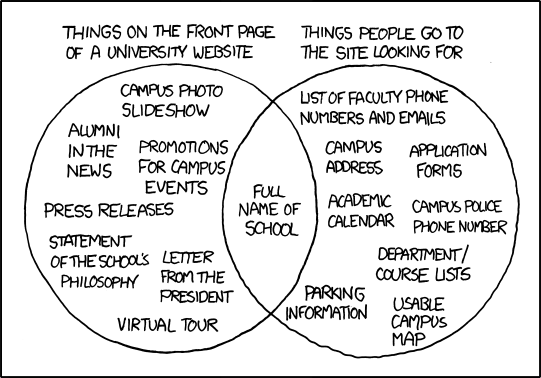Search engine optimisation is nonsense
Perhaps a little bit of an exaggeration, but not much. It’s certainly true to say that the SEO tricks peddled by most of the self-proclaimed experts out there are at best useless, and at worst damaging.
We’ve become so familiar with search engines that we forget just how clever they actually are. Google’s index of the web encompasses billions of pages. Your search query is simultaneously processed by multiple servers, each performing a highly specialised function. The results from all these servers are collated, the results ranked and returned to you in typically under half a second. Building and optimising search algorithms has become the new rocket science and each year Google recruits many of the best minds in mathematics and other scientific and engineering disciplines. Do you think that they are going to be fooled by adding multiple keywords and making a few words bold?
Let common sense prevail
Google are very clear in their recommendations:
Create content primarily for your users, not search engines–designing your site around your visitors’ needs while making sure your site is easily accessible to search engines usually produces a positive result.
Doesn’t that make sense? Google is trying to provide users with the content that they want. Their index and search algorithms are just tools to achieve that. They want to promote the best sites, make yours the best and they will promote it. And when people will visit they will get what they want, this will make it more likely that they will buy, come back, and recommend it to friends and colleagues.
Do’s
Build useful content and update it regularly
Put yourself in the mind of your audience—always a good place to start in marketing. What would you want to read? Well that’s what they are likely to be searching for. Chances are that it’s not your latest financial results.

Too many webpages are static. They are built when the product is launched and then left to gather digital dust until the product is updated or the company is rebranded. When the page was last updated is a significant factor in the ranking of search engine results. Blogging and encouraging comments are great ways to engage with your clients and prospective customers, keep your pages fresh and generate traffic.
Start with a blank piece of paper
It’s amazing how many companies base the navigation of their website on their company’s organisation structure. A common example is consultancy and implementation services being in entirely different branches of the website because they report to a different director or VP. As a visitor I don’t care about that, I care about solving my problem. It wouldn’t be so bad, but often there’s not even a link connecting the two branches.
Another common failing is not to provide links. No really. One company that I know well issues several press releases and case studies a week, typically talking about one of their services. As well as being sent to journalists, these are published on the web and often crop up in search results. The problem is, they never link to the service that they are talking about. Readers are left to brave the website’s complicated navigation to find the service in question. I bet many never get there.
Be descriptive
Make your urls, titles and headings as descriptive as possible. A page with the url domainname.com/buy/electric_toothbrush will rank more highly than a page with the same content at domainname.com/products/283920.html.
Create a sitemap
Ever wondered why so many sites have sitemaps when nobody ever uses them? That’s because they are mainly designed to help search engines to index your site. Add a HTML sitemap, or even better an XML one. Google list a number of applications that will do this for you automatically, and inform the major search engines of changes.
Don’ts
Don’t rely on images
They say that a picture paints a thousand words. Unfortunately computers aren’t smart enough to interpret pictures accurately yet. The more content that you put in images, the more will be invisible to search engines. And when you do use an image, always add a meaningful alt tag. Over reliance on JavaScipt and other client-side scripts can also make content impossible to index.
Don’t use too many keywords
The old adage that “if everything is a priority nothing is” holds true. The shotgun approach of adding dozens, even hundreds, of keywords just dilutes the score of the keywords that really matter. And don’t listen to people who tell you to add common mis-spellings, you’ve probably noticed that Google is extremely good at spotting alternate spellings—for example including “behavior” in the results of searches for “behaviour”.
Trying to manipulate the system like this is likely to damage your search engine ranking and could even lead to you being blacklisted.
Don’t use sneaky or underhand techniques
Search engines are too smart to fall for them and are likely to penalise you for insulting their intelligence. A few examples are:
- Cloaking—showing different content to search engines than to users, for example a HTML page versus a Flash movie
- Duplicate content—creating numerous similar pages or sites to manipulate rankings
- Directory or doorway pages—pages packed with keywords aimed at tricking search engines
- Dodgy link exchange schemes—swapping links with totally unrelated sites
Need help?
This is a big subject, and this is just an introduction. If you want to know about ways to improve your search engine rankings that actually work, have a look at Google Webmaster Central or contact us.
Posted by John on 23 August 2010